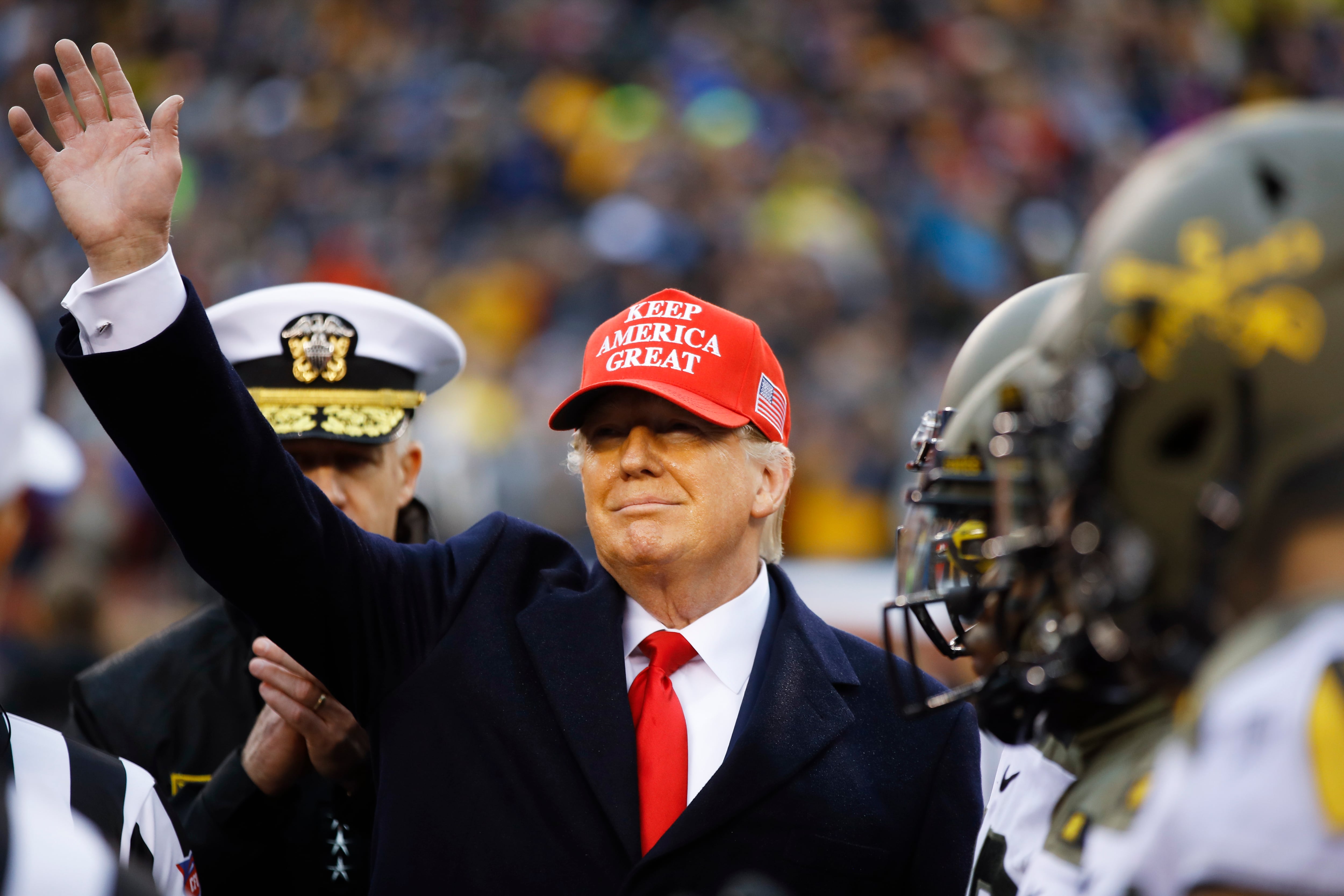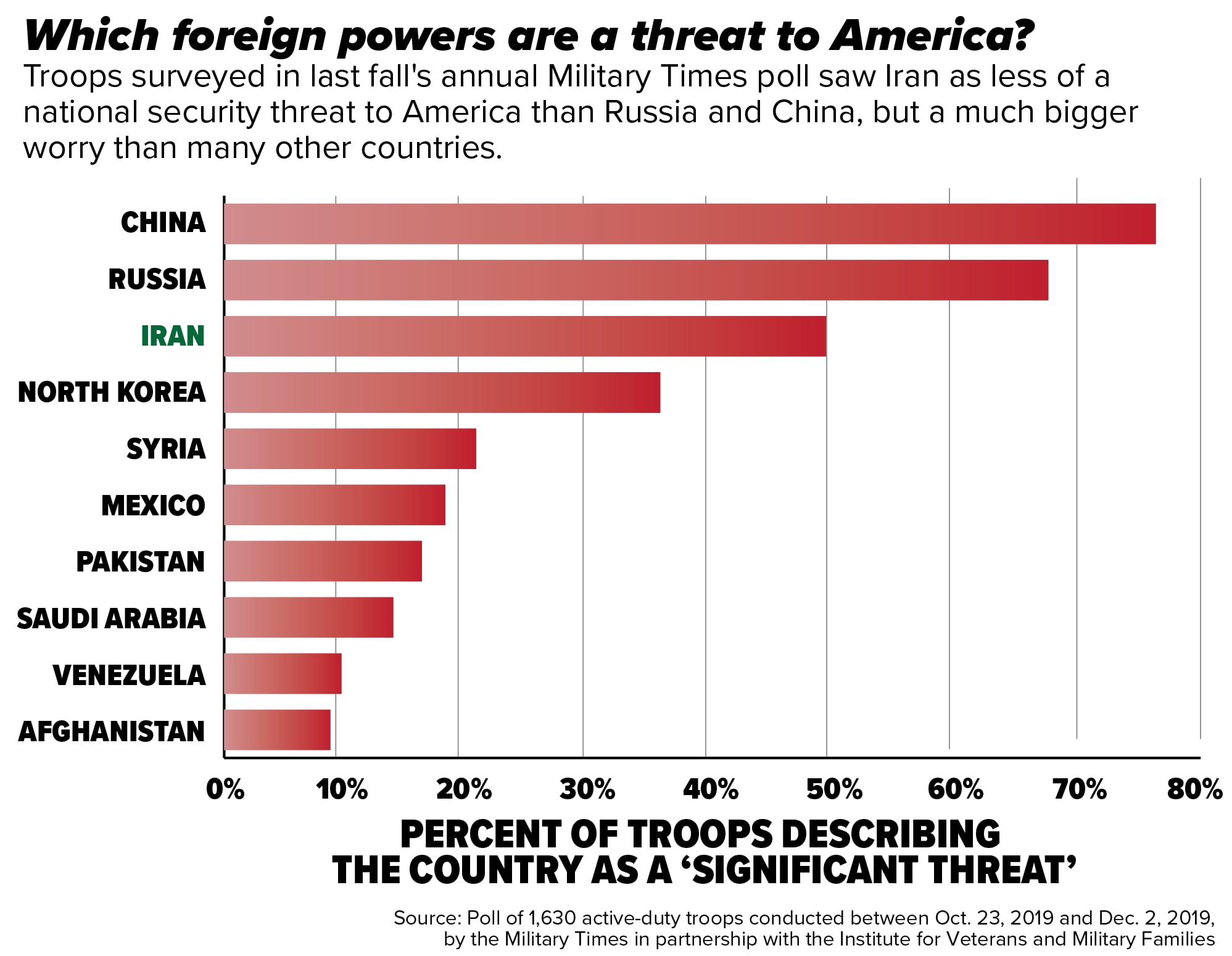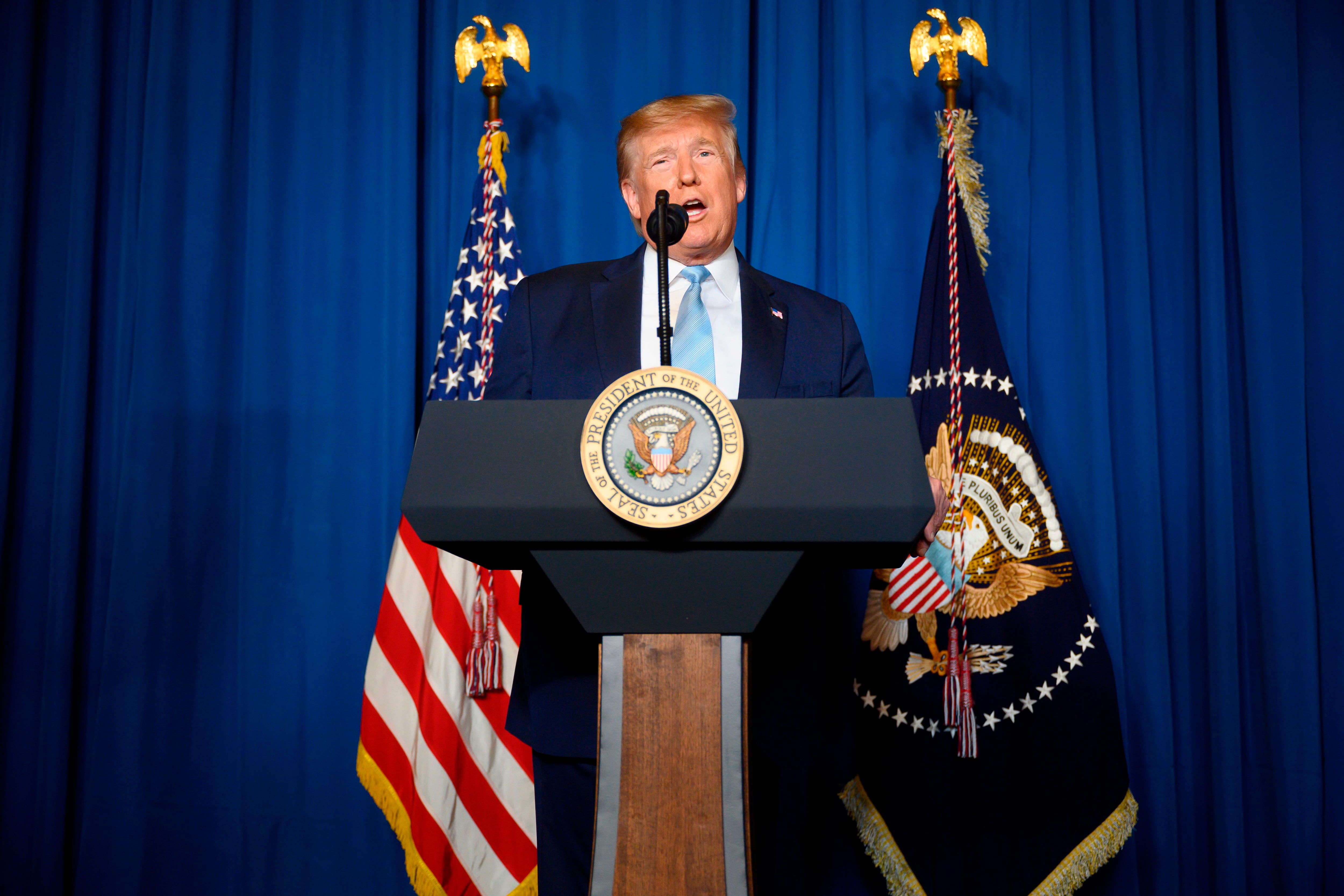Before the recent showdown with Iran, nearly half of troops surveyed in the annual Military Times poll viewed the Islamic republic as a significant threat to U.S. national security. But more worried about China and Russia as potential adversaries.
The poll, conducted last November, surveyed 1,630 active-duty Military Times subscribers in partnership with the Institute for Veterans and Military Families (IVMF) at Syracuse University. Nearly one in five of that group saw Iran as a “very significant threat” to America, compared to about 17 percent who saw the country as little or no threat.
In the time since the survey was conducted, tensions between the two countries have increased dramatically following a U.S. airstrike which killed Iranian Gen. Qassem Soleimani, the head of an elite arm of Iran’s Islamic Revolutionary Guard Corps, on Iraqi soil.
RELATED

Iraqi government officials are moving to oust all U.S. armed forces from their country in response to the attack. Still, thousands of U.S. troops have been deployed to the region in recent days, to help secure a series of embassies and American military sites.

Among the troops surveyed in November, about 45 percent said they disapproved of current U.S. policies towards Iran, compared to about 28 percent who said they back President Donald Trump’s foreign policy strategy there.
Iran was viewed as much more of a threat than Iraq (only 8 percent called that country a significant threat), Afghanistan (about 9 percent), Syria (about 20 percent) and North Korea (about 35 percent).
But Iran was seen as less of a problem among troops than Russia and China. Two-thirds of troops surveyed said Russia represented a serious threat to U.S. national security, and more than 75 percent said the same about China.
In both cases, nearly as many respondents labeled China and Russia as a “very significant threat” to America as those who labeled Iran as any type of serious danger.
In almost every country question in the survey, more troops were unhappy with current U.S. foreign policy than supportive of it. The lone exception was North Korea, where slightly more troops (34 percent to 33 percent) approved of Trump’s policies towards the Asian power.
When asked in November if the U.S. was likely to end up in another major military conflict within the next year, more than half of troops surveyed (about 51 percent) said that would happen.
But that figure was down significantly from the Military Times poll conducted a year earlier in 2018, when nearly 65 percent of troops surveyed said they expected a major military action within the next 12 months.
RELATED

Our methodology
Between Oct. 23 and Dec. 2, Military Times in collaboration with the Institute for Veterans and Military Families at Syracuse University conducted a voluntary, confidential online survey of U.S. service members. Poll participants are readers of Military Times publications whose military status is verified through official Defense Department email addresses.
The survey included 28 questions on service members’ opinions related to the current political climate, policy and national security in the United States.
The survey received 1,630 responses from active-duty troops. The IVMF used standard methodology to weight the results according to the rank, gender and service branch of the actual U.S. military. The margin of error for most questions was roughly 2 percent.
Like most studies where participation is voluntary, the poll’s sample is subject to self-selection bias. Researchers sought to account for that and adhered to generally accepted scientific practices analyzing the data.
The survey audience was 92 percent male and 8 percent female. The respondents identified themselves as 75 percent white, 14 percent Hispanic, 13 percent African American, 5 percent Asian and 5 percent other ethnicities. Respondents were able to select more than one race.
The Military Times and the researchers at IVMF have used identical methodologies for this survey since 2016.
Leo covers Congress, Veterans Affairs and the White House for Military Times. He has covered Washington, D.C. since 2004, focusing on military personnel and veterans policies. His work has earned numerous honors, including a 2009 Polk award, a 2010 National Headliner Award, the IAVA Leadership in Journalism award and the VFW News Media award.




